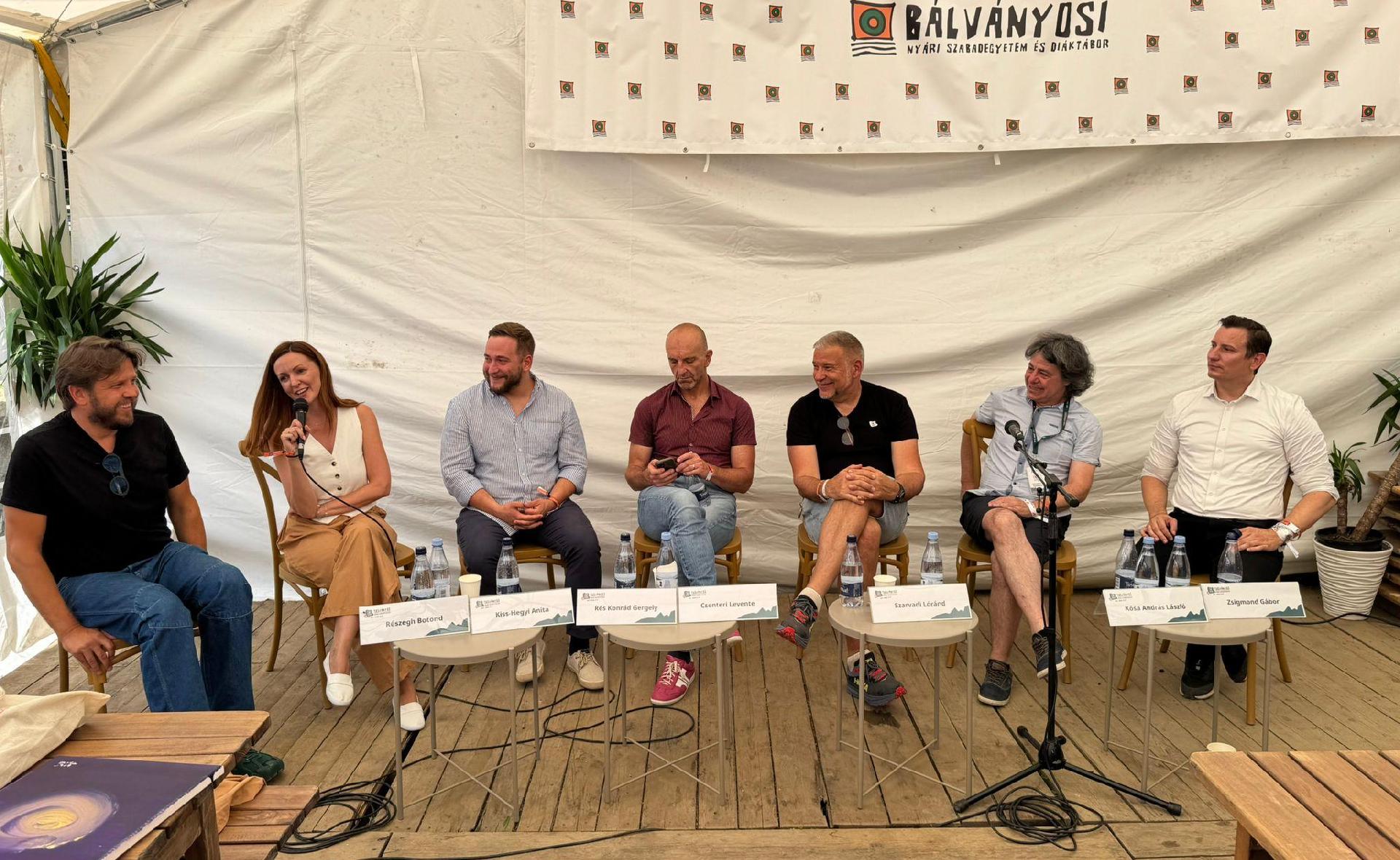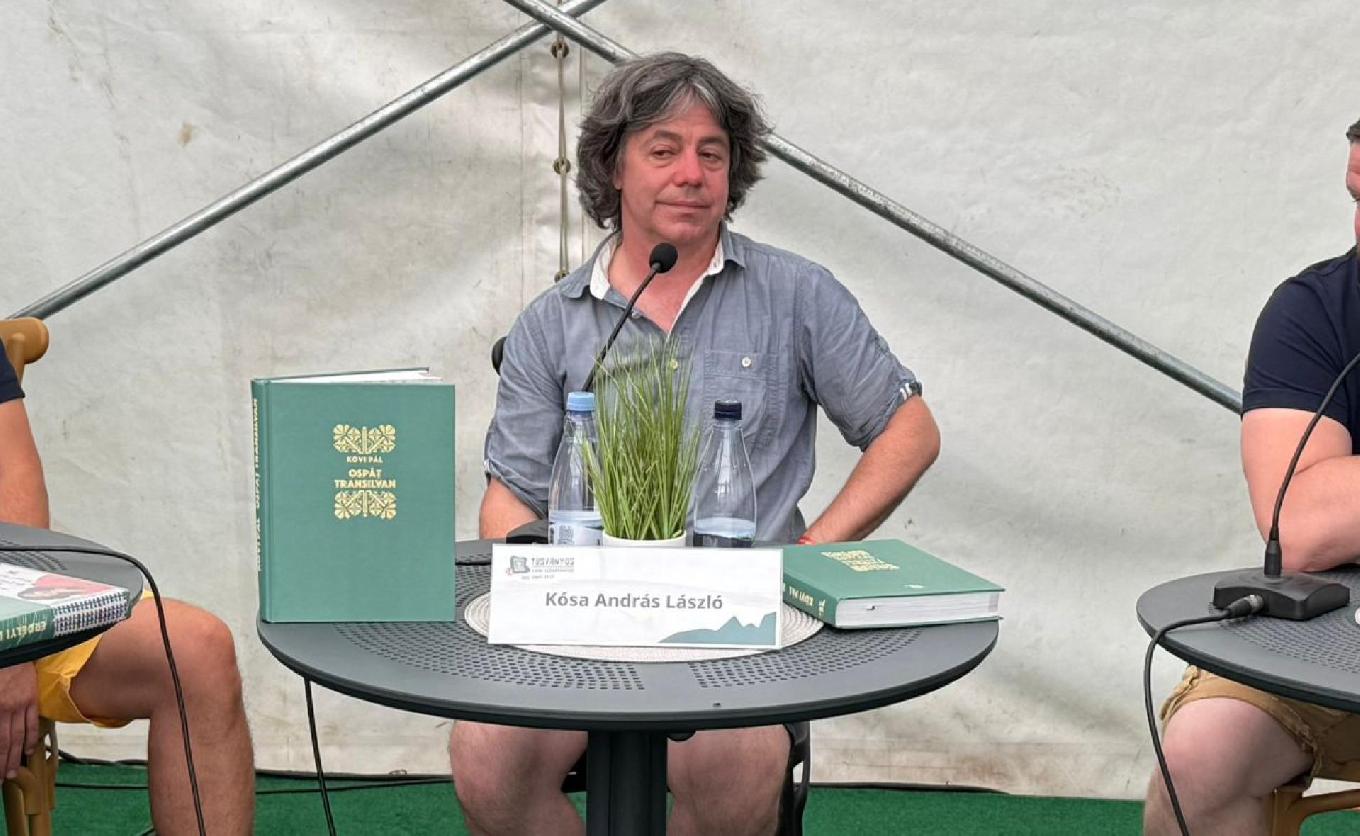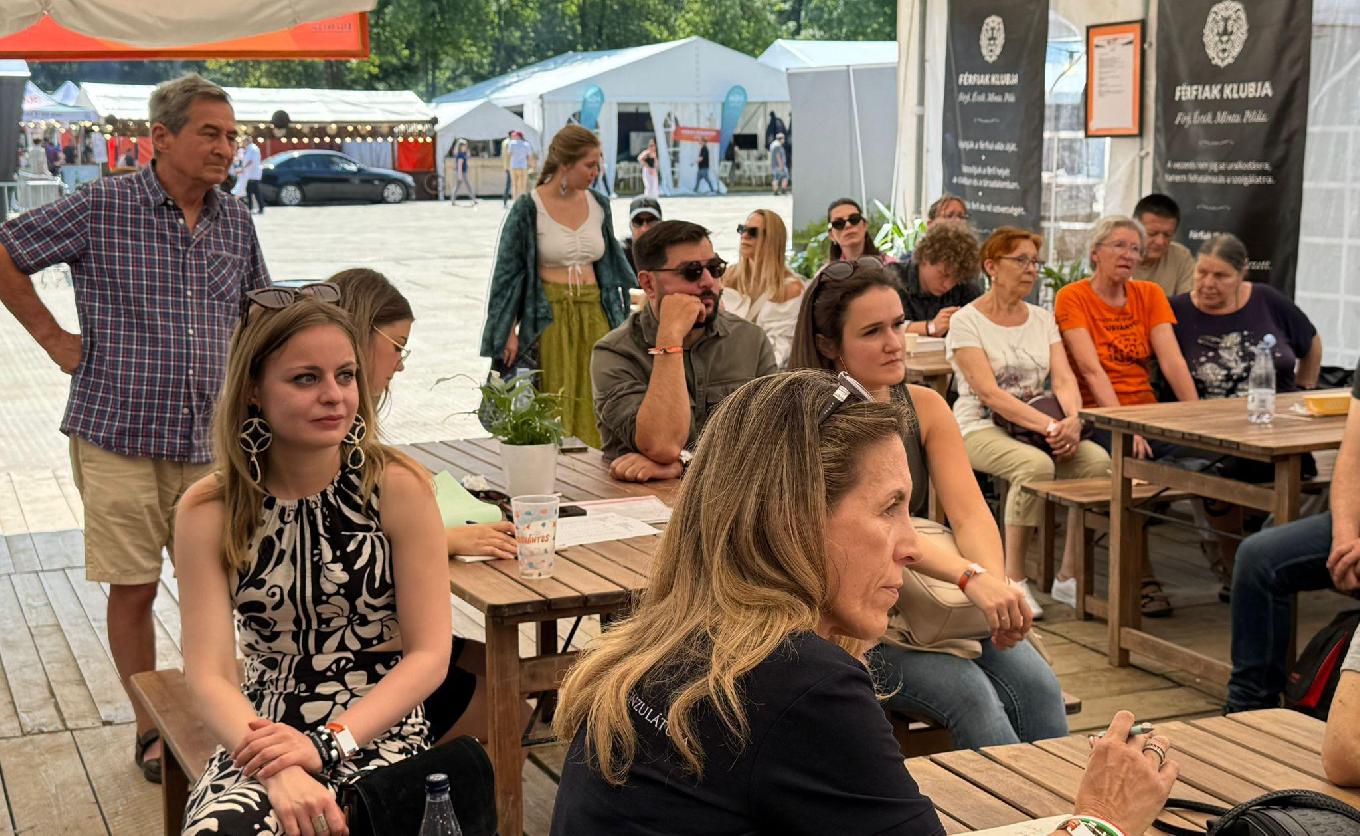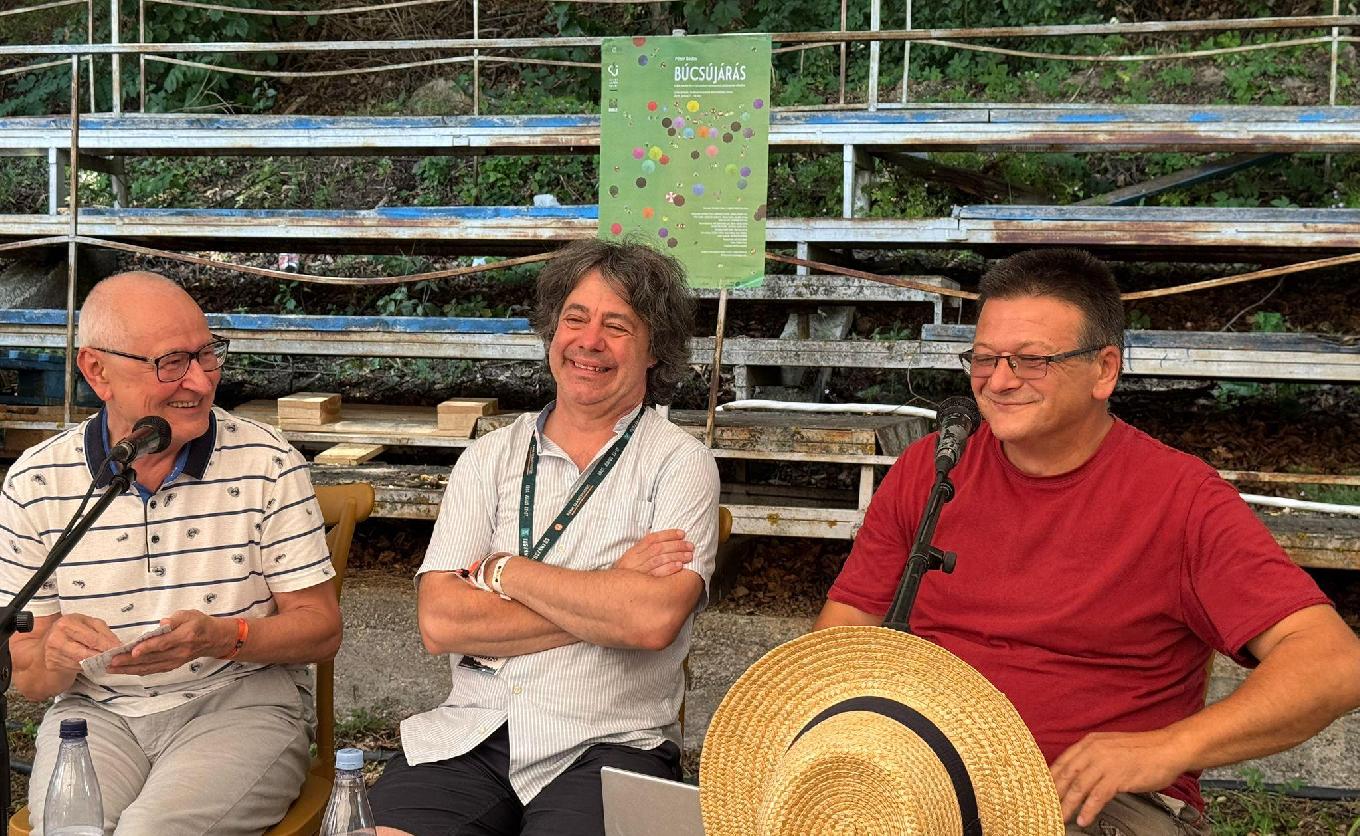
34th Bálványos Summer Free University and Student Camp
As part of the 34th Bálványos Summer Free University and Student Camp, also known as Tusványos, the Liszt Institute Bucharest organized three panel discussions: A Hungarian Gentleman from New York – Pál Kövi and the Transylvanian Feast, Hungary’s Country Image – Hungary’s Image Differently – many images, and Shakespeare and Rejtő, with participation from festival organizers, museum directors, and politicians. The event series was highly successful, attracting several hundred interested attendees.
At the roundtable titled A Hungarian Gentleman from New York – Pál Kövi and the Transylvanian Feast, the participants were Máté Vincze, Deputy State Secretary of the Ministry of Culture and Innovation, Adorján Trucza, restaurant owner, festival organizer and András László Kósa, Director of the Liszt Institute Bucharest. In his opening remarks, András László Kósa explained that one reason for holding the roundtable was the 100th anniversary of Pál Kövi's birth last year, which was commemorated with an exhibition at the Hungarian Museum of Trade and Tourism, later taken to Bucharest and Praid during the Taste of Transylvania Underground gastro festival. Another reason was the release this year of the Romanian translation of Erdélyi lakoma (Transylvanian Feast).
Máté Vincze said: “We have many stories like that of Pál Kövi, which we don’t know well enough. This is a legacy of communism, as it was not customary to promote compatriots who found success in the West. The 1970s and 1980s, when Kövi became successful with his restaurant, were the “golden age” of New York. Those who wanted to showcase their talents to the world typically tried their luck there. Pál Kövi established the number one restaurant of the era in an incredibly competitive field, one frequented by the elite of the city and even the country. The inspiration for this unprecedented success came from Transylvanian gastronomy.” Adorján Trucza said that Pál Kövi is a role model for him in multiple ways. Not only because, as a millionaire, he felt he owed something to Transylvania and took it upon himself to travel this enchanting fairyland and complete an enormous task from which we can still draw today, but also because he successfully launched a model restaurant in arguably the most vibrant city of Western civilization, a place frequented by the world’s greats—writers, actors, politicians. Moreover, Kövi’s recipes remain a constant source of inspiration in today’s globalized world, where locality is under threat and uniformity poses an acute danger in every area.
The second panel was organized under the title of Hungary’s Country Image – Hungary’s Image Differently – many images. Participants included historian and economist Gábor Zsigmond, Director General of the Hungarian National Museum, visual artist Botond Részegh, Anita Kiss-Hegyi, the State Secretary of the Ministry of Culture and Innovation, economist Levente Csenteri, CEO of Combridge Romania and Bulgaria, Gergely Rés Konrád, main organizer of the VIBE Festival, and entrepreneur Lóránd Szarvadi. Levente Csenteri spoke about how Hungary’s country image appears in the Balkans and Romania based on his field of expertise. According to him, people in Bucharest already looked at Hungary with admiration. Gergely Rés Konrád talked about how the VIBE music festival was created a few years ago with the aim of giving Hungarian university students a meeting point during the summer break where they can have fun and engage in discussions. Visual artist Botond Részegh spoke about his previous experiences and work, emphasizing his goal of building a bridge between Romanian and Hungarian cultures. According to Lóránd Szarvadi, building a country image is not such a “big deal” if everyone represents their country, national identity is what matters. The three emotional cores of country image are tourism, culture, and sports, alongside the sectors that represent the modern economic image. Gábor Zsigmond said that the primary goal of European tourism is cultural visits. Who we Hungarians are and what we have contributed to the world is revealed in museums. State Secretary Anita Kiss-Hegyi spoke about the importance of finding points of connection between various fields and encouraging cooperation. In summary, it was noted that there is currently no institutionalized form of a Székelyföld image. Visit Mures, Visit Harghita, and Visit Covasna operate separately.
The third panel discussion was titled Shakespeare and Rejtő, with translator George Volceanov, writer and poet Attila Sántha, and András László Kósa, Director of the Liszt Institute Bucharest, as participants. George Volceanov participated in a translation residency in Pécs in 2022, during which he wrote a paper comparing the works of William Shakespeare and Jenő Rejtő—this paper inspired the current discussion. In the lively discussion, it was noted that both authors contrast the “lower” and “upper” worlds in their works, their protagonists are not clear-cut role models of society, yet the outcome of their stories typically involves the restoration or sometimes the inversion of order. The participants agreed that although these two authors created in different eras, they were both persecuted in their times. The discussion concluded with the announcement that the paper comparing Shakespeare and Rejtő, originally written in English, will hopefully soon be available in both Romanian and Hungarian.



